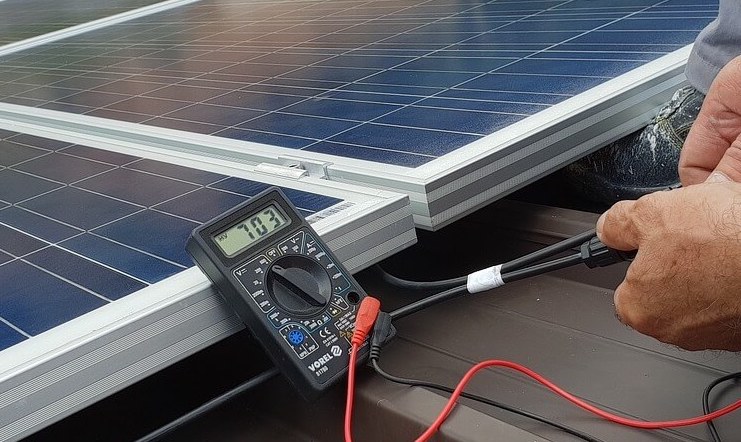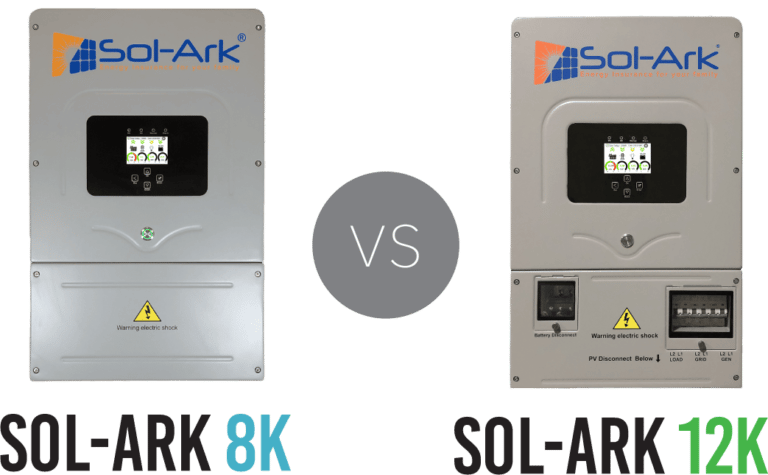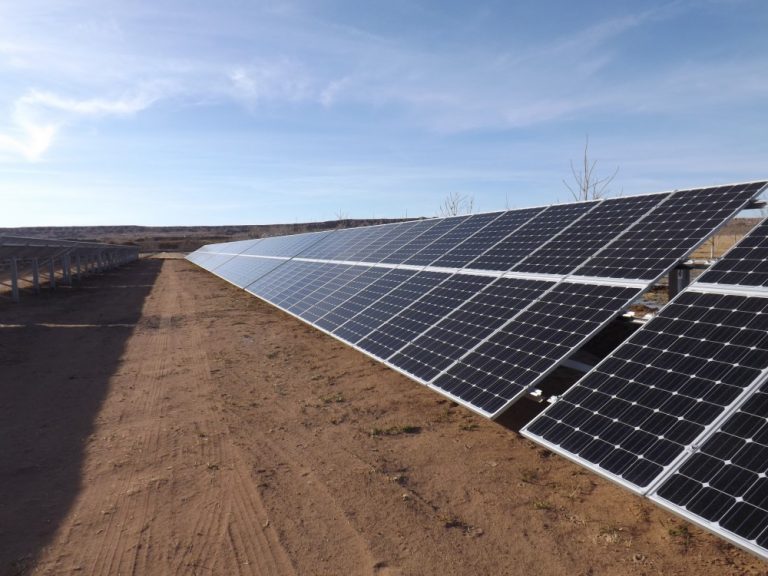Why Listen to Installers?
Since starting our alternative energy company in 2012, we have helped thousands of people build off-grid, hybrid solar systems and water systems. As installers, we have seen a few common DIY Solar mistakes that we would like to help you avoid.
Most of the systems we build are for people who want to generate and store their own power. These systems are hybrid systems with battery backup.

FREE Solar Infastructure Guide
Considering Solar? We've put together an awesome guide of unexpected ways you can save money with solar infrastructure.
Battery backup systems are becoming increasingly popular because people have the ability to use all of the power that the sun is producing and aren’t having to constantly buy and sell power. Traditionally, grid-tie systems have no backup whatsoever. This means you cannot store or use power that you are producing, even when it’s a sunny day. A grid-tie system is all fine until the utility company decides to give you a fraction of the amount that your power is worth. For this reason, hybrid systems with some type of battery backup are usually the best option.
1. Improperly configuring the Solar battery bank or Inverter
A battery bank is the core of any system. Most battery banks for modern hybrid solar systems are 48V. Many people start their battery bank in too low of a voltage because they are trying to save money. We have seen people do crazy things with their battery banks.
For many different reasons, people prefer starting off at a voltage of 12 or 24 volts, instead of the optimal voltage for solar of 48 volts. Sometimes it is because they want to save money, or it is because they have previous experience with 12v from auto or boat applications. DIY solar installers make these mistakes because they are comfortable with lower voltages. Higher voltages can be intimidating, but they are much more efficient.
If you start out with a 12 or 24 volt system, you are immediately limiting yourself from the very beginning. Why? Because higher end charge controllers and inverters are all designed around 48V DC. Since these controllers and inverters are multi-voltage capable, they can handle any voltage, but the maximum amperage cannot go any higher. This means that if you have 48 volts and 100 amps, you can have 4800 watts of charging, but on a 12 volt system you would only be able to handle 1200 watts of battery charging at one time.
Real World Example
A popular charge controller like the MidNite Solar Classic 150 can operate with solar input voltage up to 150 V DC, and it is a 96 amp charge controller. 96 amps is as much power as it can possibly output to your battery bank. So if you only spec your battery to 12 or 24v and not the maximum DC output amount, you will limit the amount of power you can produce right off the bat. The bottleneck is at the charge controller. Even though you can still use the same amount of power from the inverter, your batteries limit the amount of power you can store at one time.
Furthermore, most inverters that can supply enough power for a house require 48V. So it is best to use 48V from the beginning. Many people purchase a good charge controller and a good inverter, but choose to start out at a lower voltage that they are more comfortable with. It is best to consult with an expert from start to finish to make sure all of your equipment works together.
Start your DIY Project off on the Right Foot
When you start out at a higher voltage on any battery backup system you have a greater power efficiency, you can use smaller cables, and you can use better inverters. So when putting together a higher voltage battery bank, you are starting out with a footprint that will allow you to put more power through it.
Building a battery bank with lower voltage will often cause people to run a lot of parallel connections. Parallel connections are almost always a bad idea. You introduce possible errors by making a large capacity battery bank with low voltage. They can even be dangerous. People can be afraid of higher voltage systems or they may not fully understand how they work.
Most DIY issues stem from trying to save money. There are a lot of ways to save money in building a system, but there are certain things that only hurt you in the long run. One of these issues is trying to build your own racking.
2. Building your own Solar Racking
Many times, people think that solar racking is too expensive. They see the pricing on a roof racking system or ground mount and think that they could just make something out of Uni-Strut from the hardware store for way less money. In doing this, they end up with something ugly that is not engineered for holding panels, is not covered by their insurance and is guaranteed to make your spouse angry. Furthermore it will cause their roof to leak. These DIY systems built from off the shelf hardware store parts also take longer because you have to “invent” a racking system from scratch. Even though solar racking can be expensive, it all clicks together and works together, so it will cause way less headache in the end.
Some people even build racking out of pressure treated wood. If you don’t mount your panels properly, the solar panels will not have a warranty. Any system that is going to be roof mounted needs to be designed to have a lifespan of 25 years. Building something out of off the shelf parts just can’t accomplish that.
Buying Proper Solar Racking Saves Time
DIY solar installers make mistakes with their racking to save money. There are plenty of ways to save money in building a system, but the time spent trying to create a DIY racking system will majorly slow down your solar project.
If you would like to build a system yourself, then it’s important to at least ask someone to help you plan the system. Many people have a background in electrical work and are not intimidated by high voltage, however, it is still important to talk to someone about designing the panels, racking, and wiring.
Just recently we had a customer who wanted to use a smaller wire size because he had some. He asked why he couldn’t use it. We had to tell him that it could burn up and cause a fire in his house. So if you need advice on building a system, it never hurts to ask.
3. Building a Frankenstein Solar system.
A lot of DIYers want to build a system as fast and as quick as possible. The problem with this is that people can often times start one part of a system with the intention of making it bigger later. This is one of the worst ways to plan a solar system. There are certain parts of the system that can be further optimized later such as the amount of panels, but other things like batteries cannot be increased in size without serious modifications.
In trying to put together a solar system one piece at a time, a lot of times people will order parts and try to put things together that were never meant to be put together, hence the name, Frankenstein system.
Some DIY Installers make mistakes ordering the major parts of the solar system. Purchasing parts that are all from the same manufacturer is always a good idea.
4. Not creating proper infrastructure
When it comes to designing a Solar System, infrastructure is by far the most misunderstood subject. Many solar suppliers focus on selling you solar supplies, forgetting that solar is only one part of a balanced system. The customers we have dealt with rarely choose to buy enough solar panels to zero out their power bill. Usually our customers choose clever solutions for bringing their home’s efficiency up before calculating how much solar they need.
Whether your project is intended to be connected to the grid or off the grid, solar friendly appliances and infrastructure is one of the best ways to save money on a large system. The cost of your system goes up based on your power requirements, so the higher your power bill the higher your system cost will be. There are a variety of things you can do to avoid paying for an oversized solar system for an inefficient house.
Heating and air, hot water heaters, and a washer and dryer make up 74% of the power consumption in most older homes. Focusing three areas are the easiest way to cut way down on energy usage before spec’ing out your solar components.
- Less Energy Usage = Smaller Solar System
Efficient Appliances
Ductless mini-split systems are a way to create zones for heating and cooling your house. Not only are the units more efficient by design, the placement of multiple mini splits allows you to use way less power because you can only use heating or cooling in the room you are in.
For heating, natural gas and propane are helpful for balancing out power requirements. Converting electricity into heat, is usually more expensive than burning any type of fuel. Using wood is another great way to heat your home. Henry Ford said “Chop your own wood and it will warm you twice.”
Solar direct hot water, energy efficient appliances, and LED lighting are all ways to prepare your home for a solar project. Think through your infrastructure before thinking about your power requirements. Other companies are glad to sell you more solar panels, but you can save money by thinking smart.
In Conclusion
Watch out for these DIY Mistakes when you build your own solar system: Our installers pointed out the mistakes so that you don’t have to make them. If you need any advice building a solar system for your home send us a message or Call us. We help people with solar and off-grid infrastructure every day.




